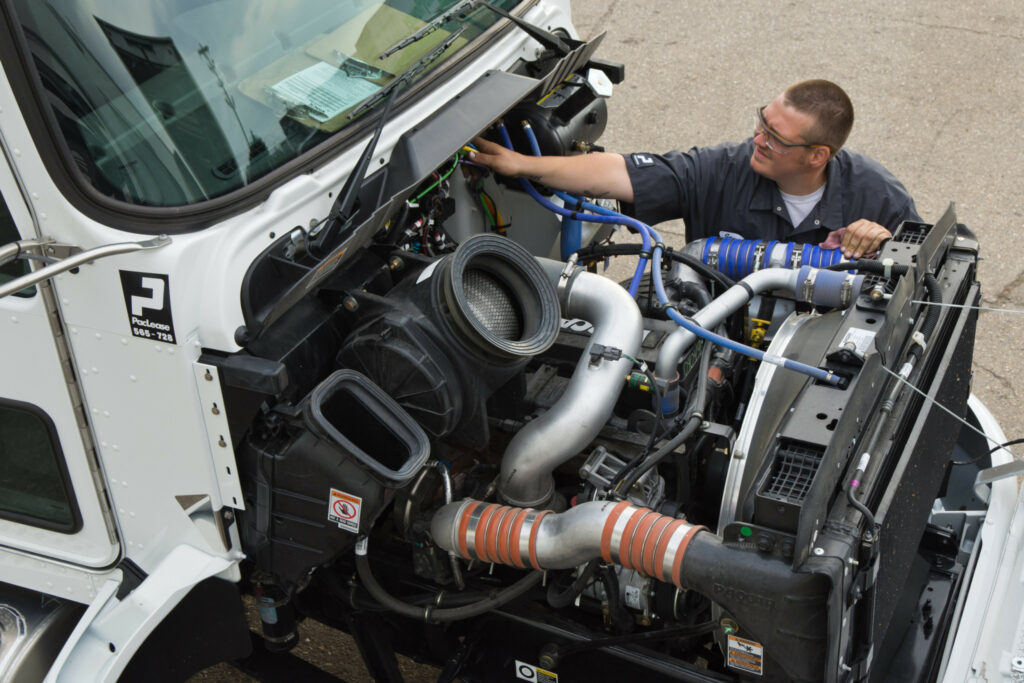6 ways fleets are dealing with supply chain issues and parts shortages
Allen Jones, director of maintenance and equipment with auto hauler AutoLogistics, has been fixing trucks for more than 35 years and never has he experienced supply chain issues and parts shortages as bad as the past couple years.
The challenges couldn’t have come at a worse time, since he was in the midst of an effort to standardize the fleet with fewer suppliers, spec’s and trailer configurations.
“We can’t get parts. Can’t get trucks. Components are sketchy, and I didn’t even mention tires,” he said during a panel discussion on parts shortages at the spring meeting of the Technology & Maintenance Council (TMC).
But such challenges bring forth the ingenuity and resourcefulness of fleet maintenance managers. Here’s a look at some of the tactics they employed to get through the worst parts shortages and supply chain disruptions the industry has seen in decades.

1. Buying used equipment
Jones Logistics traditionally purchases new trucks, but with those unavailable the company began purchasing used equipment. Caitlin Dillon, senior manager of maintenance, said the company did so because of availability, and experienced both pros and cons in the process.
On the pro side, used trucks were available, they could be put into service quickly, and the company didn’t have to turn down new business opportunities because it lacked trucks. But cons included not knowing their maintenance history, or the quality of the work that had been done on them.
“It was a major process change,” Dillon said. “The number of breakdowns has gone up.”
They were also usually out of warranty so repair costs were higher and third-party warrantees had to be purchased. More frequent repairs meant drivers sometimes missed out on loads, too.
2. Sourcing parts online
Jon-Erik Butcher, fleet maintenance manager for Best Logistics Group, turned to the internet to find parts he couldn’t get through traditional channels.
“We’ve run across a few situations that have been solved by Mr. Bezos,” he said of finding truck parts on Amazon. Online auction sites were also a new source of replacement parts for the company. Fuel lines were just one component on back order that Butcher was able to find online.
“We decided to start looking online, we found them, and they weren’t that overpriced. It helped us out a lot,” he said.
Jones said online sourcing works best when you have a specific part number in hand instead of relying on descriptions.
“There’s some stuff on there where they don’t really know what they have,” he said of online sellers.
3. Rebuilding components
If a part could be rebuilt, Best Logistics would rebuild it. This included everything from air dryers, to fifth wheels, transmissions, rear-ends, and dash clusters.
“There is a vendor that can rebuild a dash cluster for you,” Butcher said. “It’s quicker than waiting to get a part.”
Some parts are compatible across different brands. Fifth wheels from one brand of truck may be compatible with another brand when rebuilt, Butcher said.
4. Trying new brands
Jones Logistics and Best Logistics Group look different today than they did before the supply chain issues surfaced. “We were strictly with one OEM, not we definitely have a mixture across our fleet,” Dillon said.
Butcher also began purchasing trucks of different makes and models. “We were primarily one make and model. Now we have everything under the sun,” he said.
He’s even reconsidering certain spec’s because parts from some manufacturers were more susceptible to shortages than others. For instance, pinion seals were on back order with his preferred driveline supplier, and now he’s looking at other drivelines that may have better availability of that part when needed.
5. Working their contacts
Dillon leaned heavily on her sales reps for help finding parts. She advises communicating challenges to reps early and often. She also calls on other fleet managers to see if they can help her find needed parts.
“Take the part number and reach out to other contacts you have in maintenance, other dealerships, and see what you can do to get that part quicker,” she suggested.
In some cases, Butcher received help from reps who represent a different brand altogether.
“Don’t get hung up on the logo on the nose of the truck,” he said. “Use salesmen to your advantage.”
In some cases he said sales reps were able to procure a compatible part from another brand. Parts like ABS valves, air-conditioning components, brake parts, and air-conditioning components aren’t always proprietary and can work across different truck makes.
6. Expediting pickups
If a part is needed, don’t wait for it to come to you, Butcher said. He suggested using hot shot and courier delivery services to get the part faster, or even your own trucks. Butcher has sent a truck to get a part in Atlanta, had it dropped off in Charlotte, and got the truck needing the repair back on the road that same night.
Overnight shipping can cost more and result in an additional day of downtime compared to picking the part up yourself.
Have your say
This is a moderated forum. Comments will no longer be published unless they are accompanied by a first and last name and a verifiable email address. (Today's Trucking will not publish or share the email address.) Profane language and content deemed to be libelous, racist, or threatening in nature will not be published under any circumstances.